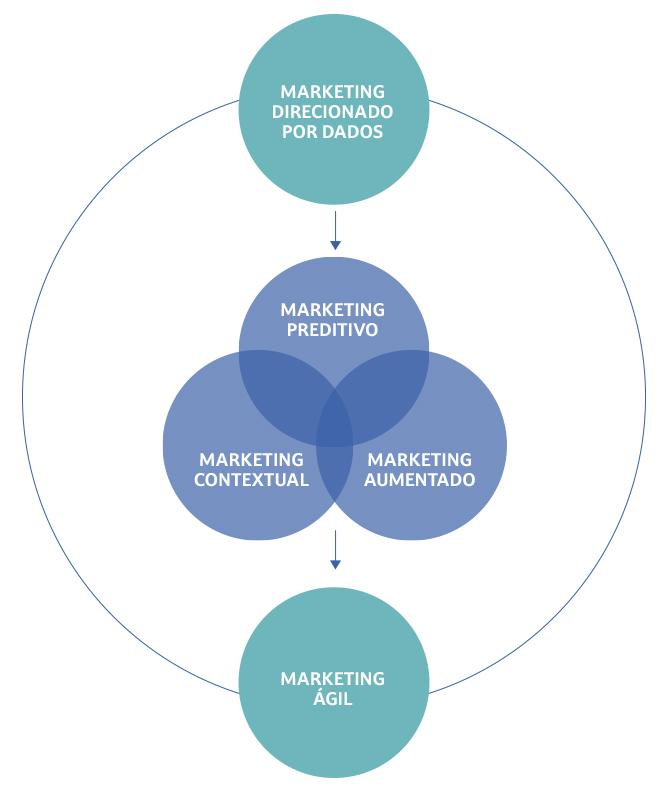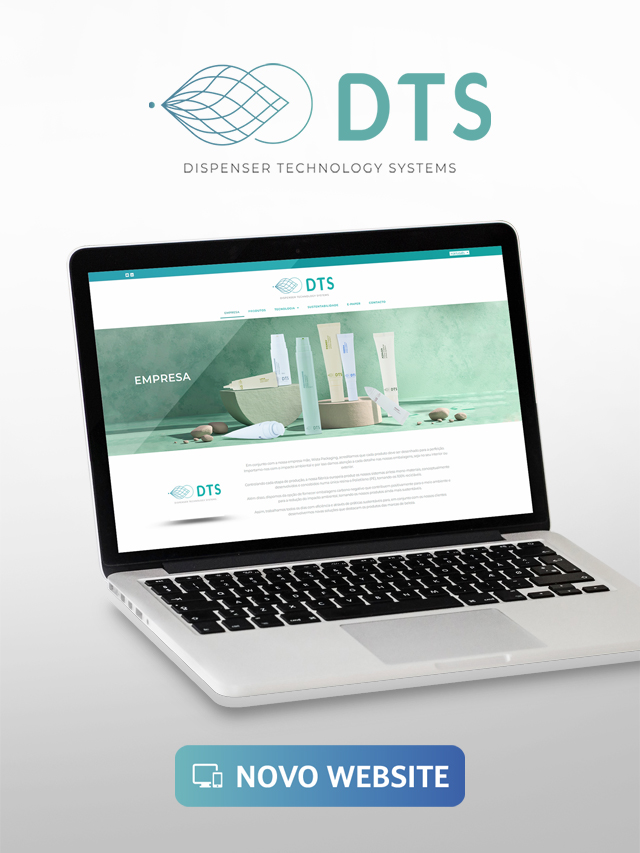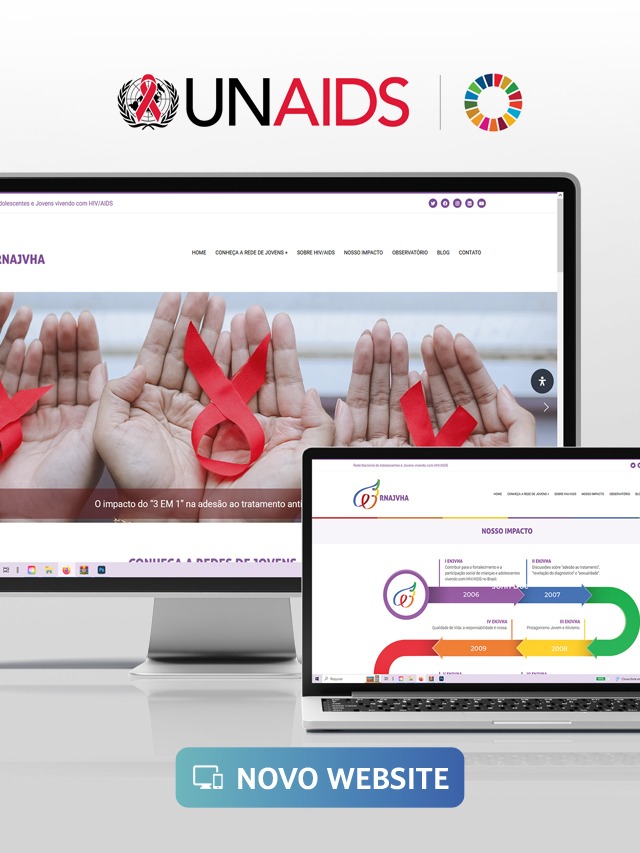Marketing evolves at the same speed as generations, communication and the needs of consumers and the market advance. It took nearly 70 years for marketing to evolve from product focus to human centricity.
In general, the transformation of marketing has accompanied the increasing changes in technology and digitalization, which have transformed the way people communicate, interact and consume products and services.
For decades, however, various concepts have withstood the test of time. Despite the “traditional” nature, for example, the concept of segmentation and selection of target markets, positioning and also the model of the 4P's – product, price, point of sale and promotion – continue to be universal landmarks for communication professionals.
Some of the major changes that occurred in marketing during this time include:
Traditional advertising era: In the 1950s and 1960s, traditional advertising was the main form of marketing. Companies invested in advertisements in newspapers, radios, TVs and billboards to promote their products and services.
Marketing of relationship: In the 1970s, the concept of relationship marketing emerged, based on building lasting relationships with customers, rather than simply promoting products.
Targeting Marketing: In the 1980s, segmentation marketing then became even more popular, and companies began to segment their target audience based on demographic, geographic and psychographic characteristics.
Digital marketing: Fast forward to the 1990s, digital marketing began to emerge with the advent of the internet. Companies began to create websites and use email marketing to communicate with their customers.
Content Marketing: In the 2000s, content marketing became a popular strategy. Companies started creating high-quality, relevant content to attract and engage their customers.
Marketing on social media: After that, then, more directly in the last two decades, with the creation of social networks, marketing became even more important, and companies began to use platforms such as Facebook, Instagram, LinkedIn, Tik Tok and Twitter to connect directly with your audience.
Influencer Marketing: In the same way, still at the turn of social networks, influencer marketing has become another very popular strategy. In this case, companies began to work with digital influencers to promote their products and services.
Understanding these changes makes all the difference when it comes to outlining strategies, objectives, goals and actions in your company. Thus, your actions will be more assertive, more likely to bring significant returns to your business.
Read too: Mental sales triggers: what are they and how to use them?
How has Marketing evolved over the years?
Marketing has evolved from product-centricity, which we call marketing 1.0, to consumer-centricity, called 2.0. Then he advanced to human-centricity, which we classify as marketing 4.0. Now, marketing as we know it is involved in the challenges that technology has brought to humanity: marketing 5.0.
These concepts are based on books written by Philip Kotler, one of the main authors and scholars of modern marketing and a reference for professionals in the field.
So, understand this division into stages of evolution as a marketing guideline for those companies that want to adapt to changes in the world and succeed in the market.
Marketing 1.0
Marketing 1.0 is a concept that refers to the first phase of modern marketing, which emerged in the 1950s and 1960s. The first phase always paralleled the industrial era, in which products were relatively basic and standardized. At that time, marketing was product-centric, that is, companies focused on producing and promoting their products without regard to the needs and desires of consumers.
Marketing 1.0 was marked by the mass approach, where companies used advertisements in mass media such as newspapers, radio and TV to promote their products to as many people as possible. This approach was based on a view that consumers were passive and simply absorbed the advertising message without questioning or evaluating its relevance.
The concept was to produce on a large scale in order to lower production costs. Then they were sold as best they could to anyone who bought them. Companies used advertising messages based on rational and logical arguments to persuade consumers to buy their products. The quality, technical characteristics and advantages of the products were the main focus of advertising messages.
In addition, marketing 1.0 was marked by the lack of interaction between companies and their consumers. Companies produced and promoted their products without considering the specific needs and desires of consumers.
We can illustrate this phase with Henry Ford's famous phrase: "A car can be any color, as long as it's black".
However, despite its limitations, marketing 1.0 was a fundamental starting point for the evolution of modern marketing. It allowed companies to increase their visibility and sales through mass advertising campaigns, and paved the way for the evolution to marketing 2.0, then already customer-centric.
Marketing 2.0
With the emergence of the information age, customer knowledge and satisfaction have become relevant for brands. With that, the marketing task was no longer so simple, the relationship became more focused on the individuality of the target audience.
Marketing 2.0 is a concept that refers to the evolution from product-focused marketing to customer-focused marketing. It is a customer-centric approach that recognizes the importance of ongoing dialogue between companies and customers, and seeks to create lasting, positive relationships for them. This approach can be highly effective for companies looking to stand out in competitive markets and meet the demands of increasingly demanding consumers.
In this context, some marketing and advertising channels emerged with the possibility of public segmentation, such as specialized magazines, cable TV channels and radio and TV programs for certain audiences.
Companies now need to listen and respond to consumers' needs and wants, rather than simply promoting their products.
This means that companies must focus on building long-term relationships with customers rather than just selling products. This involves understanding customers' needs and wants, creating products and services that meet those needs, and engaging in an ongoing dialogue with customers to ensure their satisfaction.
Furthermore, marketing 2.0 is results-oriented, measuring the effectiveness of marketing campaigns based on metrics such as customer engagement, customer satisfaction and customer retention. This allows companies to adjust and optimize their marketing strategies to meet changing customer needs and wants.
However, marketing evolves at the same speed as society, communication and the needs of consumers and the market. The importance of values and sustainability are directly linked to the success and future of an organization. And it is in this context that Marketing 3.0 emerges, where it treats people as complete and complex beings, with mind, heart and soul. Who has anguish and worries like everyone else.
Marketing 3.0
Marketing 3.0 is an evolution of Marketing 2.0, which focuses on creating customer value and promoting a better and more sustainable world. This concept emerged in the mid-2000s in response to cultural and social changes that were taking place in society.
Marketing 3.0 is based on the idea that companies should take a more humane and socially responsible approach to their business. Rather than just creating products and services that meet customer needs, companies must focus on creating value for the customer, society and the environment.
After all, consumers are not a large homogeneous mass, nor a target to be reached. They are human beings, with all their complexity and uniqueness, with values behind their actions and behaviors.
This means that companies need to be more aware of their social and environmental responsibility and incorporate these concerns into their business strategies. Companies must be able to communicate to their customers how they are contributing to a better world, in addition to providing high quality products and services.
In marketing 3.0, companies must work in partnership with their customers, rather than simply promoting their products. Companies must be able to understand and meet their needs, creating customized solutions and working together to achieve common goals.
Furthermore, Marketing 3.0 calls for a more holistic and integrated approach to marketing that takes into account not only the technical and functional aspects of products, but also their emotional and spiritual dimensions. And brands need to position themselves differently, they have to show that they are doing their part and that they share the same anxieties and concerns, that they really know their consumers. For this, it is necessary to clearly define the identity of the brand and strengthen it in the construction of an image with meaning incorporated into the vision and values of the company.
At its apex, marketing 3.0 is a combination of three concepts, which we call the 3Is, identity, integrity and image. The result is not achieved completely without these three points. The brand is useless if it only articulates a positioning. She may have a clear image, but not necessarily a good one. And positioning may just be a claim to consumers. Actions are worthless if the '3Is' are not complete and in tune.
And, with the internet and digital marketing already on the scene, this consumer gains voice and protagonism to influence brands. This concept was not only consolidated, but also expanded, with the increase in people's power of communication and the importance they attach to sustainability and social correctness, added to the capacity for dissemination and persuasion of social media – this is what we are calling marketing. 4.0.
Read too: How to build an effective organic email marketing list
Marketing 4.0
Marketing 4.0 marks the transition from marketing to the digital economy. Nothing that characterizes Marketing 3.0 is lost — however, now, technology is much more present in people's lives, in all their spheres, in all their relationships. This horizontal relationship not only materialized but also became the basis of communication and marketing today. Consumers have turned to word of mouth as a more reliable form of advertising.
This occurs precisely because the new reality of the internet, with all the strength of its relationship networks, proves the importance of thinking about consumers' feelings as a way to consolidate image, reputation and, consequently, results. The impact is direct in the decisions of the communication areas of a company.
Marketing 4.0 is based on the idea that companies must be present at all customer touchpoints, from product discovery to the after-sales experience, taking advantage of the opportunities offered by digital technology. This concept is called Omnichannel, or Omnichannel.
This means that companies need to be able to deliver personalized and relevant customer experiences in real time. Companies must use data and advanced analytics to understand customer needs and wants and provide customized solutions for each individual customer.
In Marketing 4.0, companies must use technology to create an emotional connection with their customers. Businesses can leverage advanced technologies like augmented and virtual reality to create immersive and exciting customer experiences that allow them to experience products and services in a whole new way.
In summary, Marketing 4.0 is a customer- and technology-centric approach that seeks to provide personalized and relevant experiences for customers across all touchpoints, taking advantage of the opportunities offered by digital transformation.
The Covid-19 pandemic has accelerated the digitalization of business. With the establishment of lockdowns and physical distancing policies, both markets and marketers have been forced to adapt to this new digital and contactless reality. This period was not only a moment of digitalization of companies, but also of reflection on their role in the world. If Marketing 3.0 had already raised the need to take a stand on the world's problems, now Marketing 5.0 reinforces this issue, but now intersected with the power of technology.
In the migration to Marketing 5.0, what happens is that these technologies need to turn to the good of humanity. Marketing 5.0 brings together the human-centeredness of Marketing 3.0 and the technological empowerment of Marketing 4.0, but adds concern for creating a more inclusive and sustainable society.
Marketing 5.0
Marketing 5.0 materializes against the background of three major challenges: the gap between generations, the polarization of prosperity and the digital divide.
It is the first time in history that five generations living together on the planet have contrasting attitudes, preferences and behaviors. Marketers will also be faced with chronic inequality in an imbalance in the distribution of wealth, which leads to market polarization. Furthermore, we will need to find a compromise between those who believe in the potential brought by digitization and those who do not.
What is Marketing 5.0
By definition, it is the application of technologies that mimic human behavior to create, communicate, deliver and enhance value throughout the customer journey.
One of the crucial themes is what we call “next tech”, a group of technologies used to emulate the capabilities of the human marketer. This includes AI, NLP, sensors, robotics, augmented reality (AR), virtual reality (VR), internet of things (Iot) and blockchain.
Some of these technologies may seem far-fetched and even intimidating to marketers, but we're starting to realize just how accessible – both in terms of availability and cost – they've become in recent years.
The concept of Marketing 5.0 is tool-neutral. Companies can implement their methods with any hardware or software available on the market. The bottom line is that companies need marketers who understand how to design a strategy that applies the right technology to the various marketing use situations.
Despite the in-depth discussion about technology, it is important to keep in mind that humanity must remain the central focus of marketing 5.0. The goal is to create a new frictionless and convenient customer experience (CX). For this, companies need to create a symbiosis between human and computer intelligence.
How technology can supercharge marketing
The rise of social media marketing and search engine marketing – as well as the exponential growth of e-commerce – has introduced marketers to the benefits of digitization, but marketing in the digital context is about much more than just moving customers away. for digital channels. Technology can revolutionize the way marketers do their jobs, such as:
– Make more informed decisions based on big data;
- Predict results of marketing strategies and tactics;
– Bring the experience of the digital context to the physical world;
– Increase the ability of frontline marketers to deliver value;
– Accelerate marketing execution.
The five components of Marketing 5.0


- data driven marketing
Data-driven marketing is the activity of collecting big data data from various internal and external sources and using it in decision-making, as well as creating a data ecosystem to guide and optimize marketing decisions.
- agile marketing
Agile marketing consists of employing decentralized and multidisciplinary teams to rapidly conceive, design, develop and validate products and marketing campaigns. In a scenario that has increasingly constant and rapid changes, companies must be agile to respond quickly to the market.
- predictive marketing
Predictive marketing is the process of creating and using predictive analytics to predict the results of marketing activities even before launch.
- contextual marketing
Contextual marketing is the activity of identifying, profiling and providing consumers with personalized interactions through the use of sensors and digital interfaces in physical space.
- augmented marketing
Augmented marketing is the use of digital technology to improve the productivity of the marketer who has direct customer contact. The technologies employed, such as chatbots and virtual assistants, mimic the human being.
Technology for humanity
Marketing 5.0 is based on the anthropocentricity of Marketing 3.0 and the technological power of Marketing 4.0. It starts with mapping the customer journey, identifying which marketing technologies can add value and improve the performance of the human marketer.
Companies applying Marketing 5.0 need to act on data from the ground up. Creating a data ecosystem is the prerequisite for implementing the practical uses of Marketing 5.0.
All of these execution elements require enterprise agility to provide a real-time response to market changes.
But understand that this adaptation does not happen overnight, because it requires changes in your brand's culture and behavior. In our journey of knowledge, we will provide different content to help you make the best decisions to adapt to Marketing 5.0.
Reflection
What Marketing do you consider your company to be in?
Does the implementation of digital technologies in your company go beyond social media marketing and e-commerce?
What are the advanced technologies that you think would add value to your company?





























